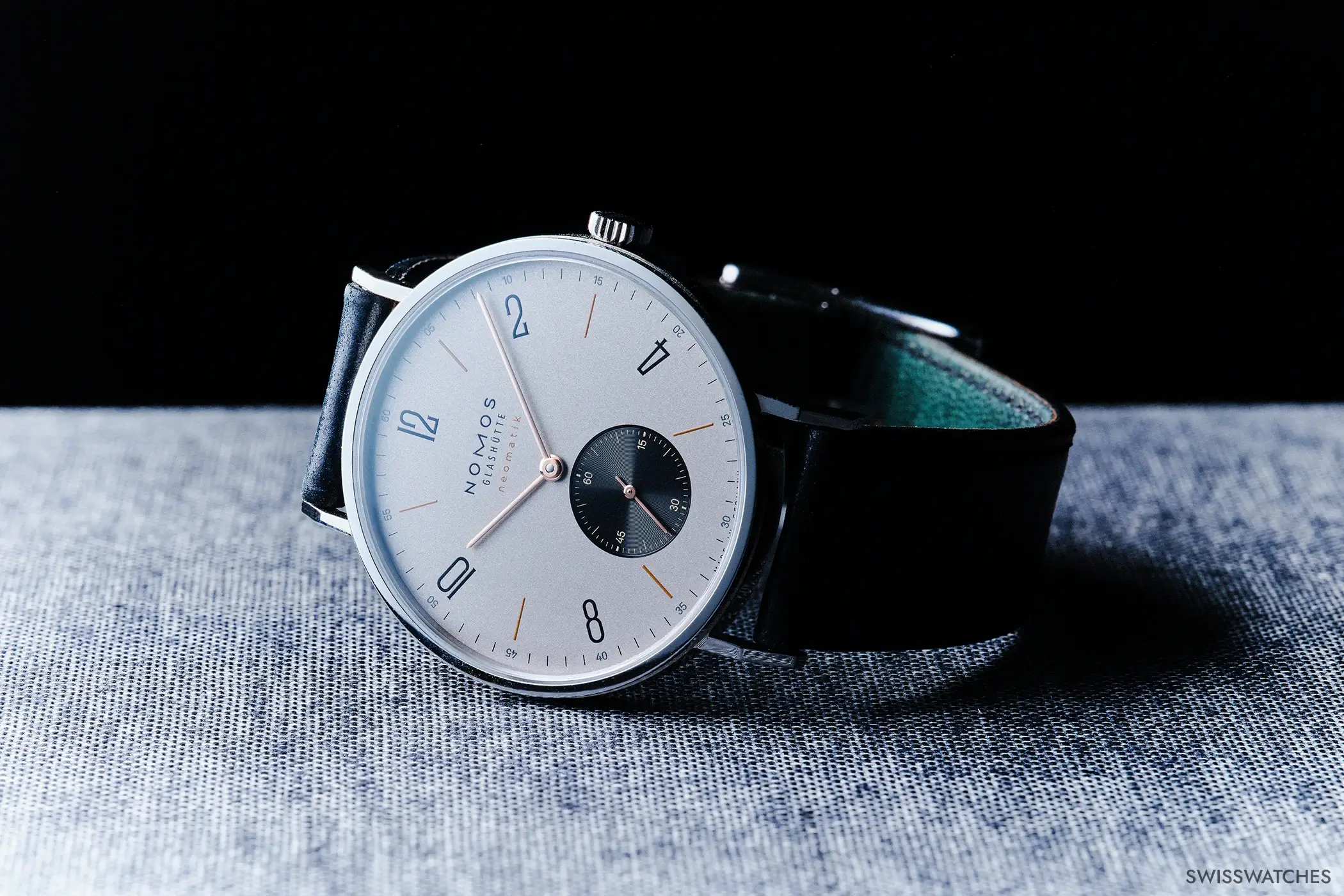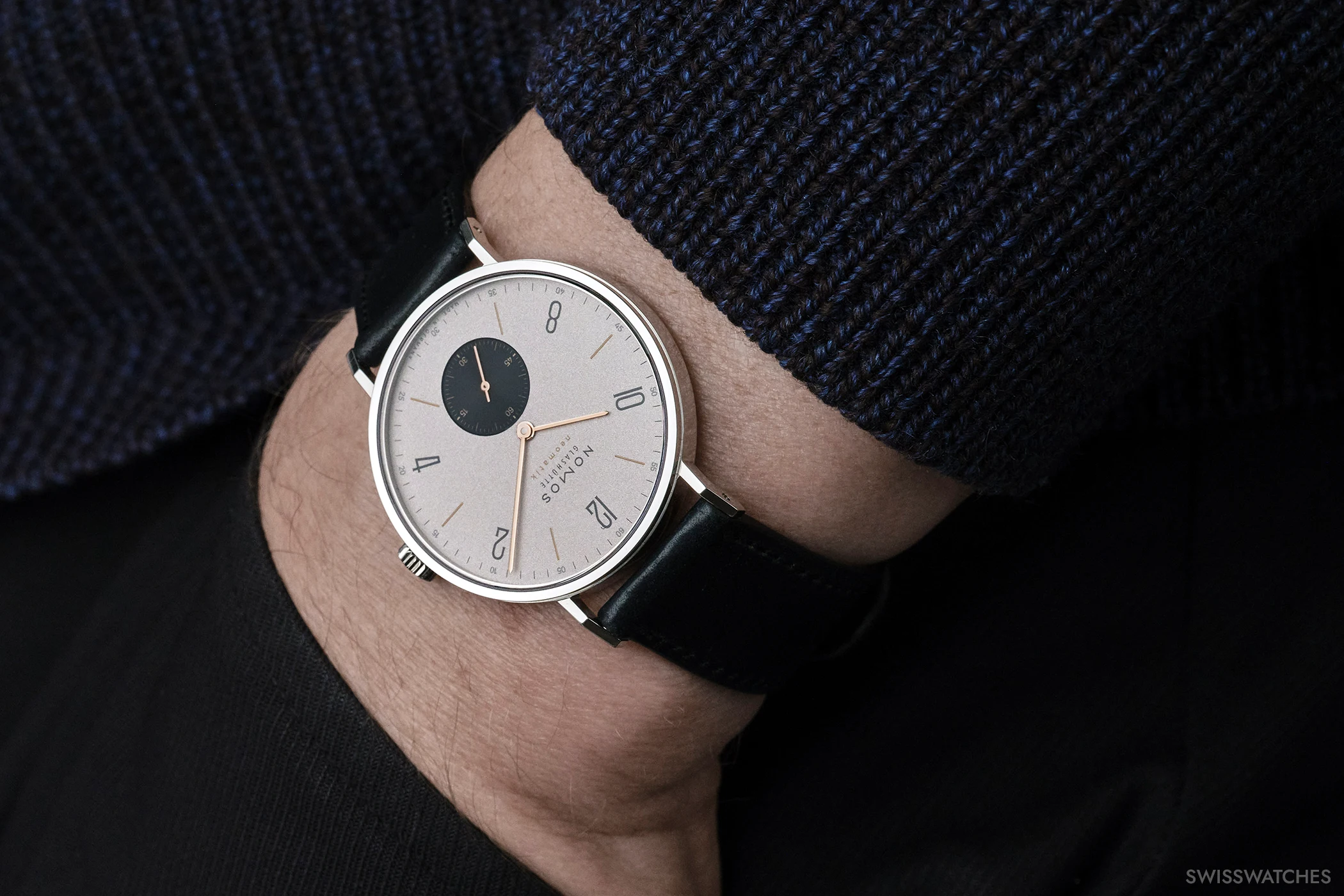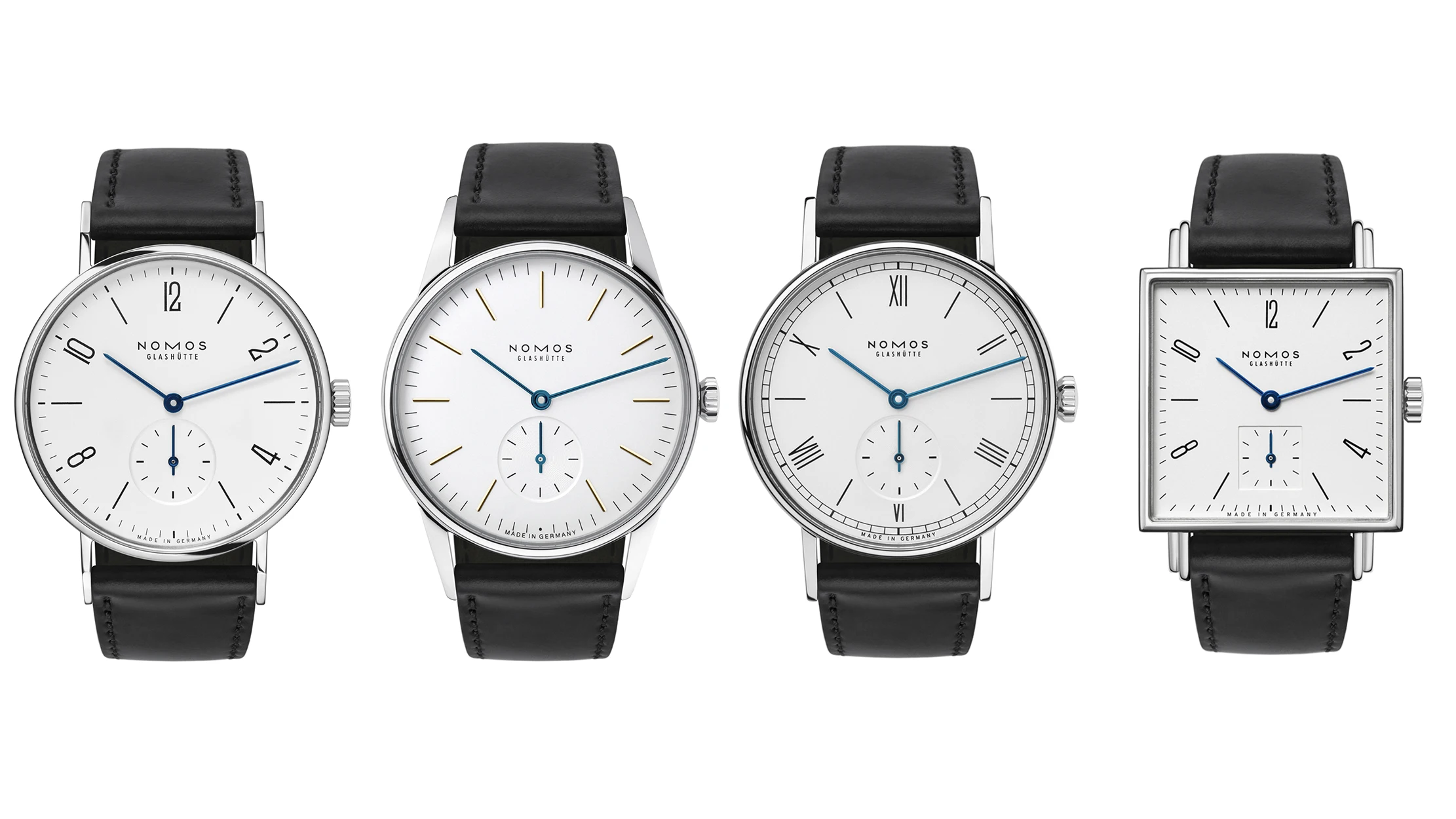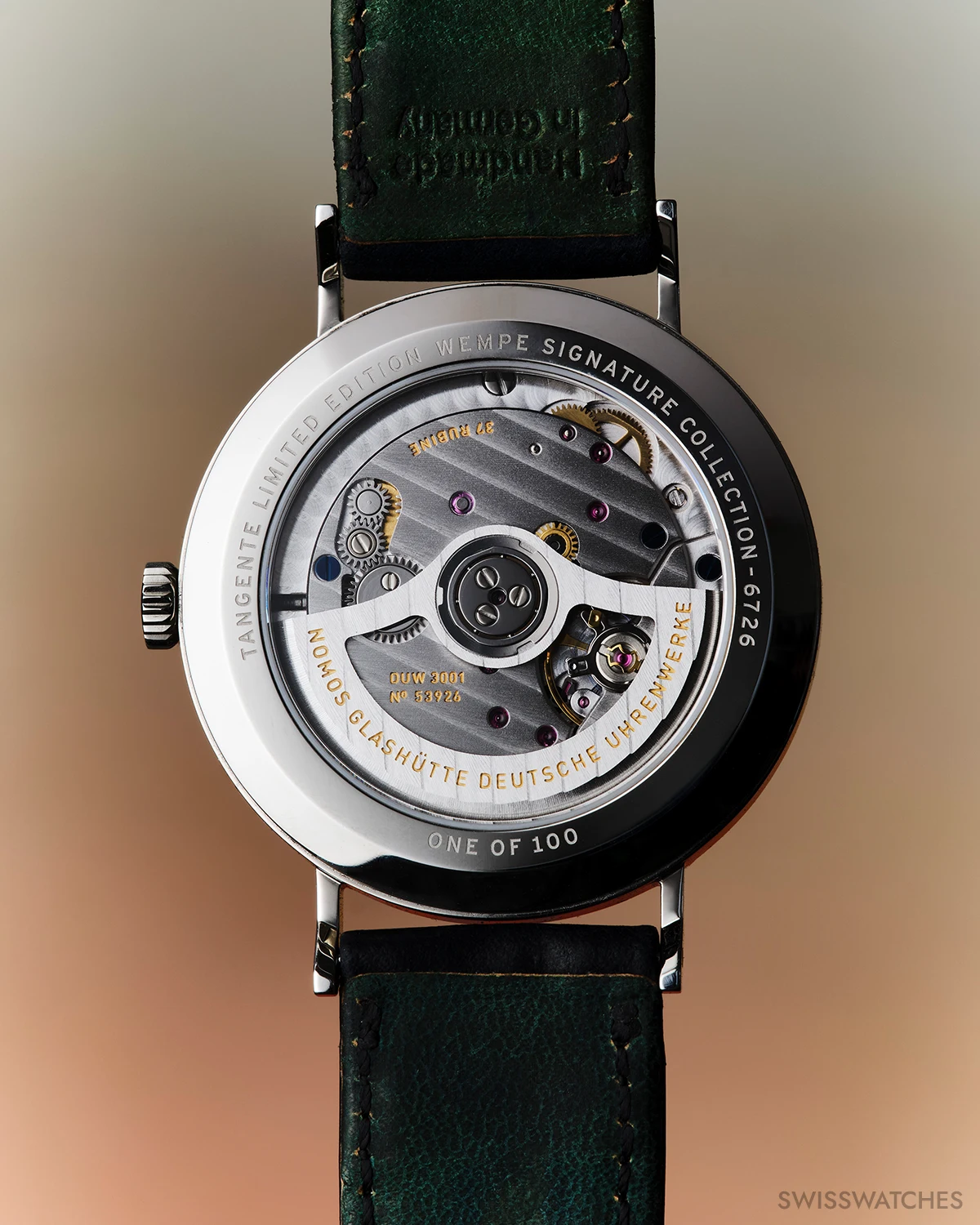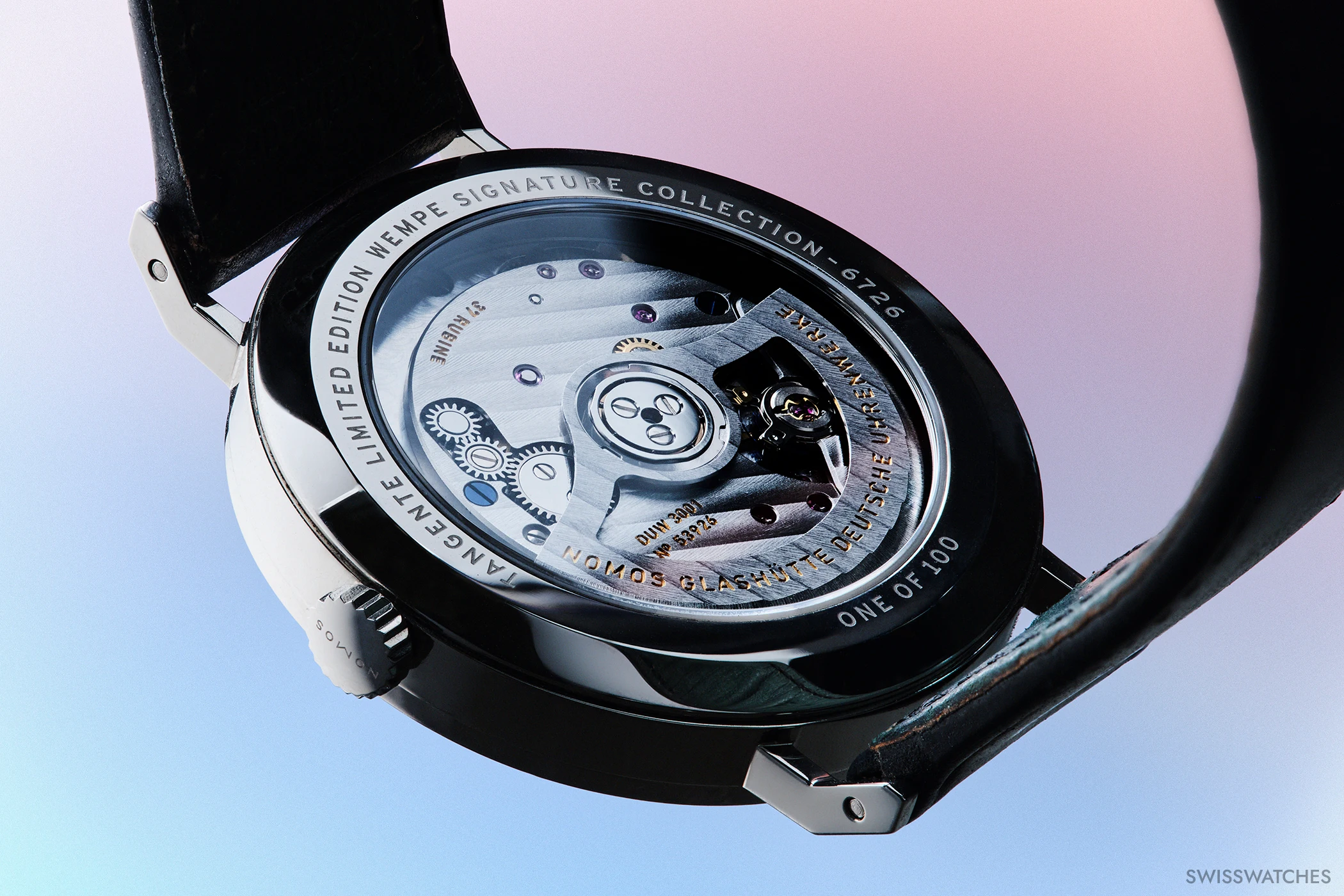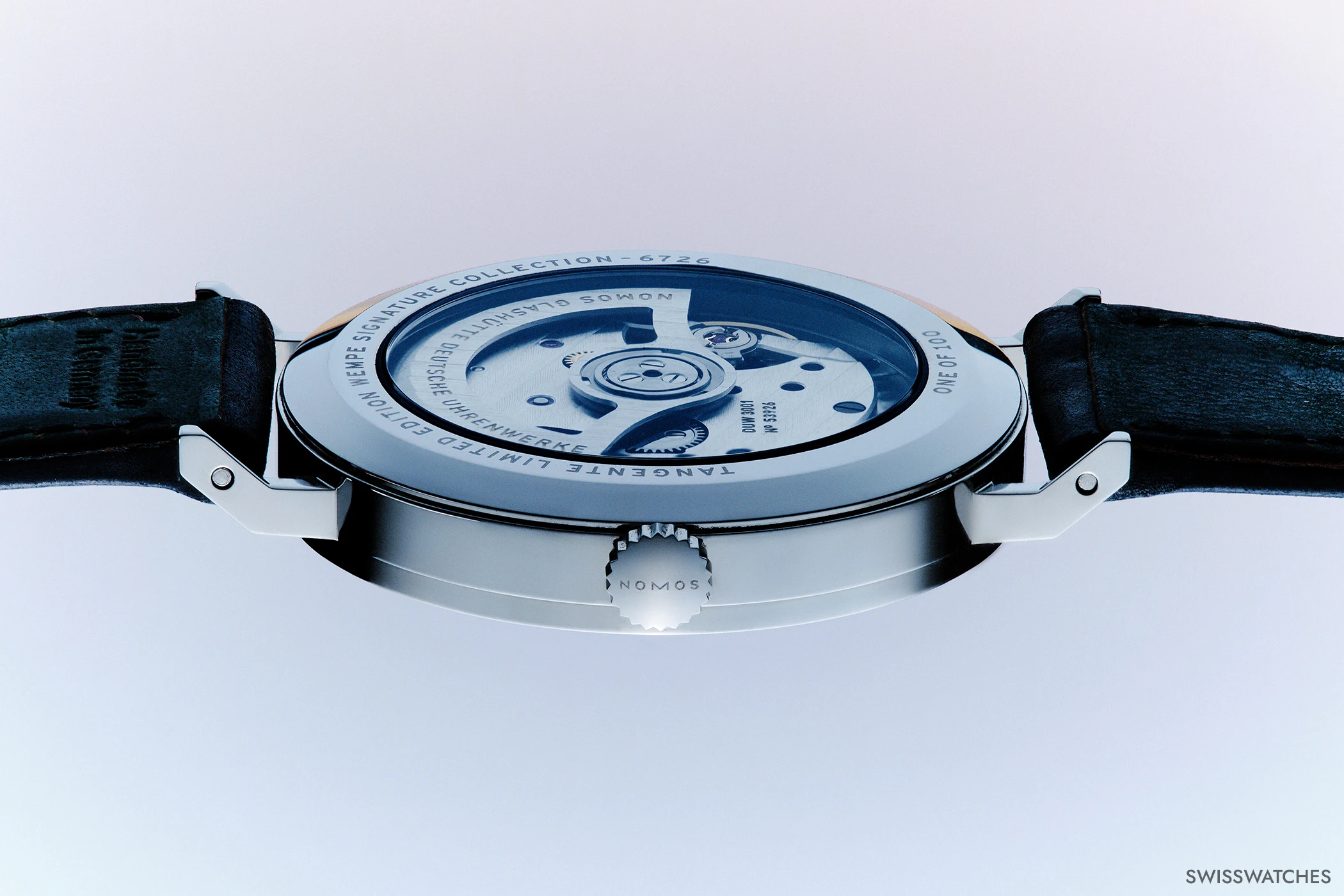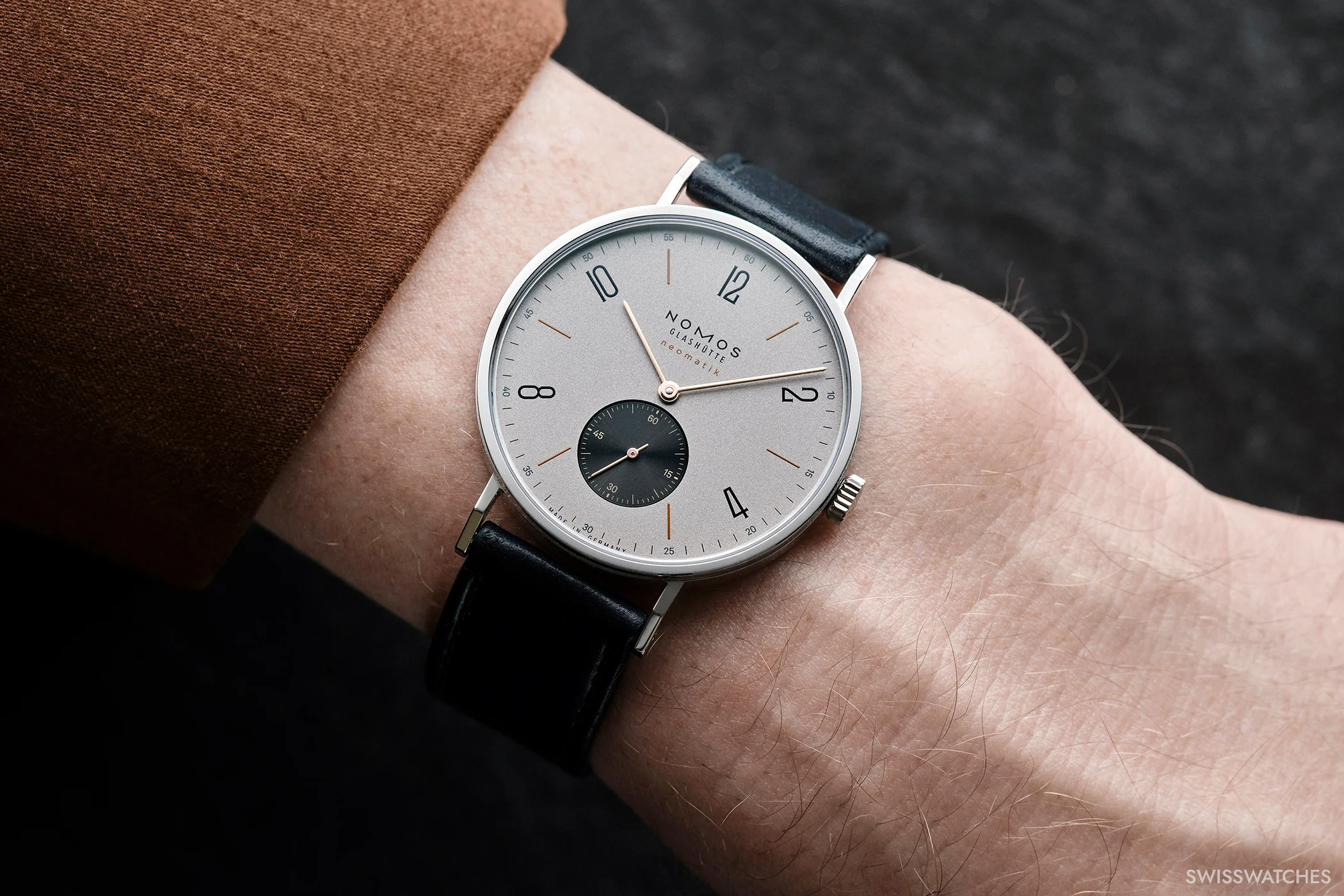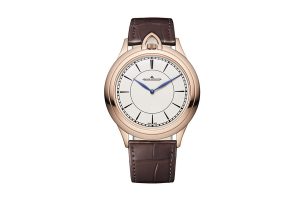
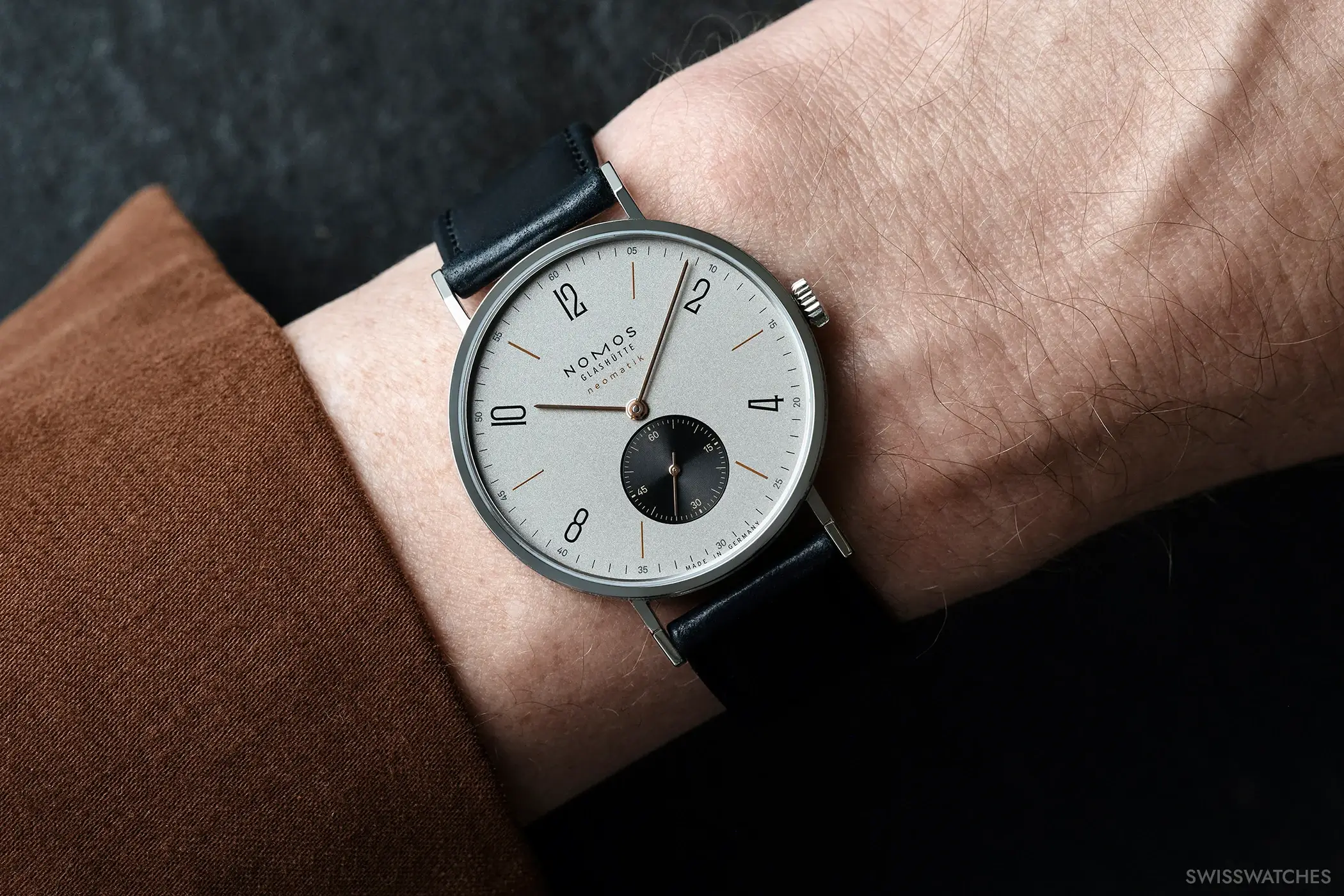
Wempe and Nomos Glashütte: The Tangente neomatik 39 as the Second Chapter of the Signature Collection
The Wempe Signature Collection has, for several years now, been a true passion project of the family-run Hamburg jeweller. Together with its long-standing partners, Wempe creates limited special editions available exclusively through its own boutiques. The focus lies on reinterpreting classic models that, through subtle design refinements and the use of distinctive materials, gain a character entirely their own. Following the first collaboration in 2023, the second edition with Nomos Glashütte now arrives: the Wempe Signature Collection Nomos Tangente neomatik 39. In the following, we will not only take a closer look at this new release, but also explore how the origins of the Tangente continue to shape Nomos’ design philosophy today – and why the connection between Nomos and Wempe extends far beyond the Signature Collection itself.
The Origins of the Tangente and Its Significance for Nomos Glashütte
Within the Nomos Glashütte portfolio, the Tangente occupies a particularly important position for several reasons. On one hand, it laid the foundation for the brand’s now more than 13-model collection; on the other, it established the distinctive design language that makes a Nomos watch instantly recognisable – the interplay of functionality and purity.
But let us return to the beginning. When photographer Roland Schwertner founded Nomos Glashütte on 1 January 1990 – the first company to be newly established in Glashütte after the fall of the Berlin Wall – he commissioned graphic designer Susanne Günther to design the brand’s inaugural models. Together, they searched for inspiration and came across historical publications featuring a Glashütte variation of a dial by the Pforzheim-based dial manufacturer Weber & Baral from 1937. This dial, which had also been supplied to A Lange & Söhne, became the design reference for what would later become the Tangente. Its aesthetic was strongly influenced by the Bauhaus school – itself an evolution of the ideas formulated by the Deutscher Werkbund.
Founded in Munich in 1907, the Deutscher Werkbund sought to renew German product culture by uniting art, craftsmanship, and industry. A key concern was the pursuit of a design approach that merged the notions of “purpose”, “material”, and “construction” – the very essence of “form follows function”. In doing so, the Werkbund sought to counteract the often ornamental excesses that had accompanied industrialisation within the applied arts. The aim was to establish a design language defined by clarity, simplicity, and an absence of ornamentation. Building upon these principles, the Bauhaus school emerged between 1919 and 1933, taking the philosophy a step further. Rather than merely improving the design of industrial products, Bauhaus sought to create an entire way of life shaped by functionalism, geometric forms, and industrial production – an approach that profoundly influenced fields such as furniture, architecture, graphic design, and typography.
Inspired by both movements, the Tangente was launched in 1992 as part of Nomos Glashütte’s debut collection – alongside the Orion, Ludwig, and Tetra models. To capture the spirit of both the Bauhaus and the Deutscher Werkbund, which Nomos officially joined that same year, Günther refined the original typography and proportions. Today, the Tangente remains the brand’s best-selling model, available in numerous variations – from versions with or without a date, to models with a power reserve indicator, as well as two-hand and neomatik automatic editions.
The First Special Edition within the Signature Collection: the Tangente neomatik 41 Update Signature Collection
In 2018, Nomos presented the DUW 6101 at Baselworld – the second in-house calibre of the neomatik class following the DUW 3001. The term “neomatik” refers to the manufacture’s entirely newly developed automatic movements, all equipped with the proprietary Swing System – but more on that shortly. The DUW 6101 was notable for introducing a newly developed date mechanism to the Tangente line for the first time. In the Tangente neomatik 41 Update, the date display took the form of a ring around the edge of the dial, with the numerals 1 to 31 and two coloured markers framing the current date. This model became the inspiration for Wempe and Nomos Glashütte’s first joint limited edition within the Signature Collection in 2023: the Tangente neomatik 41 Update Signature Collection. Limited to 200 pieces, the watch combined an ice-blue dial with dark blue hour indices and heat-blued hands, creating a particularly refined aesthetic contrast.
Previous Collaborations between Wempe and Nomos Glashütte
However, this collaboration within the Signature Collection is by no means the first time the two companies have worked together. The partnership between Wempe and Nomos Glashütte dates back to 2003, when Nomos created a special Tangente edition to celebrate Wempe’s 125th anniversary. For each of the 21 cities in which Wempe had a presence, a dedicated model was produced in a limited run of 125 pieces, with the city’s coat of arms or landmark engraved onto the movement. For Hamburg – still home to Wempe’s headquarters today – an exclusive edition of 125 watches was crafted in 18-carat gold.
Credit © ClubNomos
In 2005, to mark the 100th anniversary of the Wempe Chronometerwerke, the Wempe 100 collection was launched. The concept involved producing 100 special editions, each limited to 100 pieces. Among them were models such as the Tangente Kleinstkredit, which was available only via instalment purchase at a 0% interest rate; the Tangente Rosmarie, featuring delicate rose motifs on a white dial; and the Tangente Lävograph, designed specifically for left-handers, with its crown positioned on the left side of the case.
The new Wempe Signature Collection x Nomos Glashütte Tangente neomatik 39
The Dial of the Wempe Signature Collection Nomos Tangente neomatik 39
As part of the Wempe Signature Collection, the two brands now present the second product of their collaboration: a special edition of the Nomos Tangente neomatik 39, limited to just 100 pieces. The highlight of the new Wempe Signature Collection Nomos Tangente neomatik 39 is its dial, which for the first time in a Tangente combines a platinum-grey base design with a black sub-dial and golden accents on the hands and hour markers.
Despite these refined updates, the designers have succeeded in staying true to the Tangente’s hallmark aesthetic of functionality and simplicity. The dial of the Wempe Signature Collection Nomos Tangente neomatik 39 pairs a matte, grained rhodium-grey surface with a black, finely grooved subsidiary seconds dial positioned at six o’clock. Only the even-numbered hours are displayed as black Arabic numerals in a contemporary font (12, 2, 4, 8, 10), while the remaining hours are indicated by slender, gold-coloured printed markers that echo the hue of the slim golden hands. Any sense of clutter has been consciously avoided; instead, a fine minute track around the outer edge, with small numerals at each hour position, ensures clear legibility of the Wempe Signature Collection Nomos Tangente neomatik 39.
“The Wempe Signature Collection x Nomos Glashütte Tangente neomatik 39 marks another chapter in our long-standing collaboration with Nomos Glashütte. Since the launch of the first four model series in 1992, we have enjoyed a close partnership. Over the years, we have successfully developed several limited editions together.”
Kim-Eva Wempe
The Movement of the new Wempe Signature Collection Nomos Tangente neomatik 39
The Tangente marked several key milestones for Nomos – both in design and in technical development. Initially, it was powered by a hand-wound movement sourced from ETA (the Peseux 7001). Around 2005, this was replaced by the in-house Nomos Alpha calibre. Then, in 2014, the brand reached another major turning point. After seven years of development, an investment of €11.4 million, and collaboration with TU Dresden and the Fraunhofer Institute, Nomos celebrated the serial production debut of its proprietary regulating system at Baselworld 2014: the Swing System.
This module – comprising the balance spring, escape wheel, and pallet fork – became a cornerstone of Nomos’ success. Although Nomos had been manufacturing its own movements since 2005, the Swing System laid the foundation for calibres that were slimmer, more refined, and more efficient than their predecessors. More importantly, it allowed the manufacture to free itself from Swiss suppliers – in particular, the Swatch Group – and to take full control over both the quality and production volume of its movements. According to Nomos, around 95% of all movement components and associated production steps are now made in-house. These range from single-part fabrication and fine regulation to case assembly – all carried out across the brand’s three manufacture buildings in Glashütte, employing more than 180 people (more about the production at Nomos Glashütte can be found in our detailed manufacture visit).
In 2015, the first calibre of the neomatik class, the DUW 3001, was introduced – “DUW” standing for Deutsche Uhrenwerke, the designation for all Nomos calibres featuring the Swing System. This self-winding movement, which also powers the new Wempe Signature Collection Nomos Tangente neomatik 39, is a bidirectional automatic calibre with stop-seconds functionality. It boasts a slim height of just 3.2 mm and delivers a power reserve of approximately 43 hours at a frequency of 21,600 vibrations per hour.
The Case of the Wempe Signature Collection Nomos Tangente neomatik 39
Moving from the components produced in-house by Nomos to those sourced externally, we find the creative heart of the brand located around two hours north of Glashütte: the Nomos design studio Berlinerblau. This team of about 20 individuals – including graphic designers, writers, photographers, and above all, product designers – is responsible for shaping the brand’s distinctive minimalist aesthetic. Around a dozen of them dedicate their daily work to refining the visual identity of Nomos watches. Once the designs and technical specifications are finalised and sent to partners, all components outside of the movement – such as the case, hands, dial, strap, and clasp – are produced externally.
In the case of the Wempe Signature Collection Nomos Tangente neomatik 39, the watch features a stainless-steel case measuring 38.5 mm in diameter and, thanks to the slim movement, a height of just 7.1 mm. It is fitted with a sapphire crystal that is anti-reflective on both sides, while a sapphire caseback reveals the DUW 3001 automatic calibre and its fine finishing – including rhodium-plated surfaces with Glashütte ribbing, Nomos perlage, and heat-blued screws. On the caseback, the engravings “Tangente Limited Edition Wempe Signature Collection” and “One of 100” serve as a subtle reminder of the model’s exclusivity – without specifying an individual edition number.
Price and Availability of the Wempe Signature Collection Nomos Tangente neomatik 39
The result of the collaboration between Wempe and Nomos Glashütte, limited to just 100 pieces, is water-resistant to 5 bar (50 metres) and comes on a black horse leather strap. Sales will begin worldwide on 3 November 2025, available through all Wempe boutiques as well as the Wempe online shop. The Wempe Signature Collection Nomos Tangente neomatik 39 is priced at €3,260.
